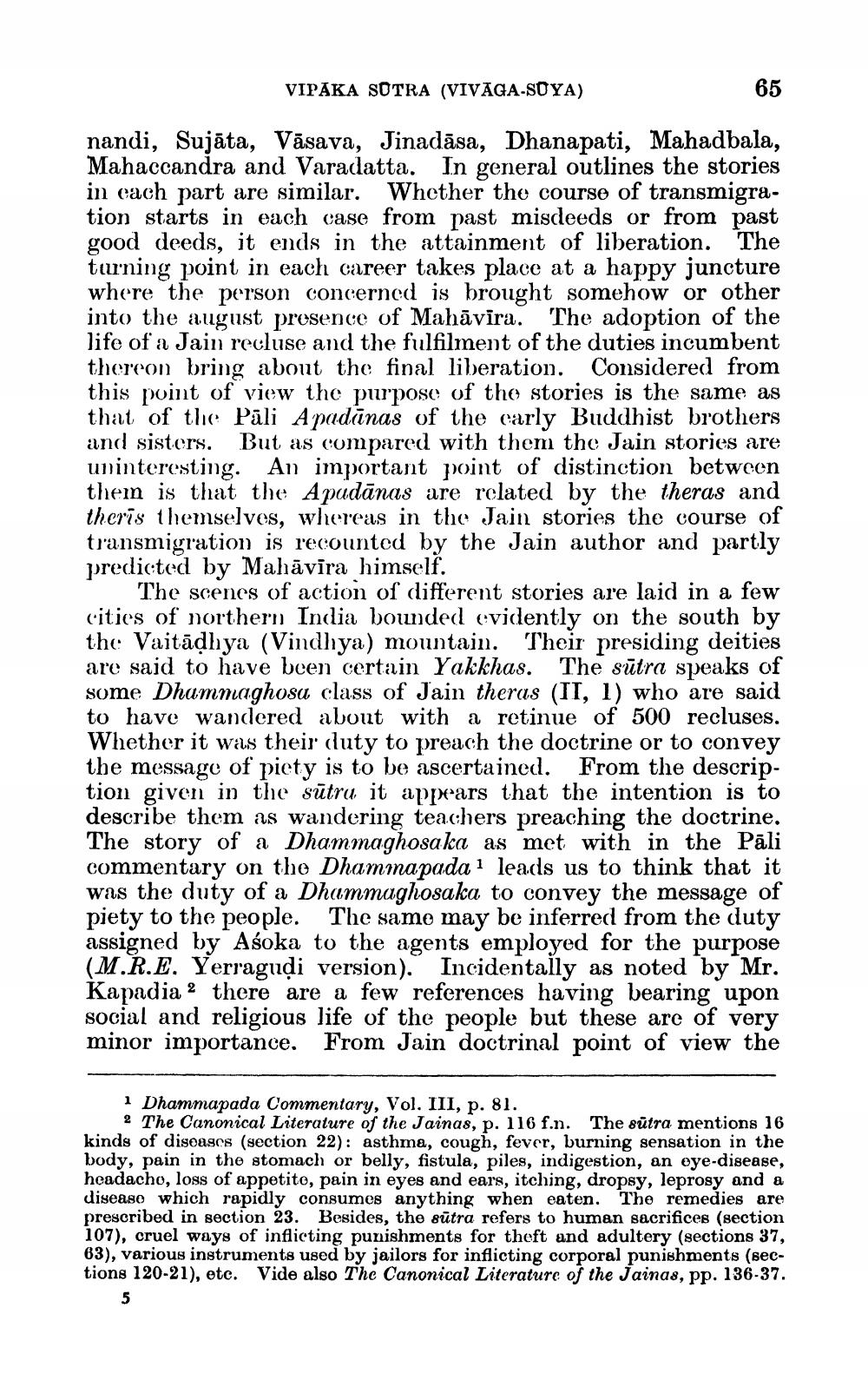________________
VIPAKA SOTRA (VIVĀGA-SOYA)
65
nandi, Sujāta, Vásava, Jinadāsa, Dhanapati, Mahadbala, Mahaccandra and Varadatta. In general outlines the stories in each part are similar. Whether the course of transmigration starts in each case from past misdeeds or from past good deeds, it ends in the attainment of liberation. The turning point in each career takes place at a happy juncture where the person concerned is brought somehow or other into the august prosence of Mahāvira. The adoption of the life of a Jain recluse and the fulfilment of the duties incumbent thereon bring about the final liberation. Considered from this point of view the purpose of the stories is the same as that of the Pāli Apadūnas of the early Buddhist brothers and sisters. But as compared with them the Jain stories are uninteresting. An important point of distinction between them is that the Apudānas are related by the theras and thcris themselves, whereas in the Jain stories the course of transmigration is recounted by the Jain author and partly predicted by Mahāvīra himself.
The scenes of action of different stories are laid in a few cities of northern India bounded evidently on the south by the Vaitādhya (Vindhya) mountain. Their presiding deities are said to have been certain Yakkhas. The sūtra speaks of some Dhammaghosa class of Jain theras (II, 1) who are said to have wandered about with a retinue of 500 recluses. Whether it was their duty to preach the doctrine or to convey the message of piety is to be ascertained. From the description given in the sūtru, it appears that the intention is to describe them as wandering teachers preaching the doctrine. The story of a Dhammaghosaka as met with in the Pāli commentary on the Dhammapadal leads us to think that it was the duty of a Dhammaghosaka to convey the message of piety to the people. The same may be inferred from the duty assigned by Aśoka to the agents employed for the purpose (M.R.E. Yerragudi version). Incidentally as noted by Mr. Kapadia 2 there are a few references having bearing upon social and religious life of the people but these are of very minor importance. From Jain doctrinal point of view the
i Dhammapada Commentary, Vol. III, p. 81.
2 The Canonical Literature of the Jainas, p. 116 f.n. The sutra mentions 16 kinds of diseases (section 22): asthma, cough, fever, burning sensation in the body, pain in the stomach or belly, fistula, piles, indigestion, an eye-disease, headacho, loss of appetito, pain in eyes and ears, itching, dropsy, leprosy and a disease which rapidly consumes anything when eaten. The remedies are prescribed in section 23. Besides, the sūtra refers to human sacrifices (section 107), cruel ways of inflicting punishments for theft and adultery (sections 37, 63), various instruments used by jailors for inflicting corporal punishments (sections 120-21), etc. Vide also The Canonical Literature of the Jainas, pp. 136-37.




